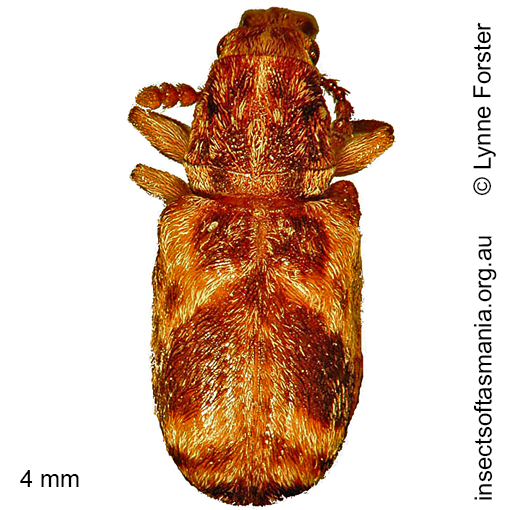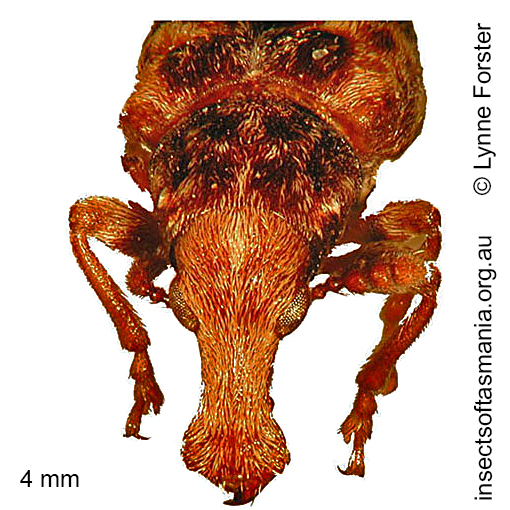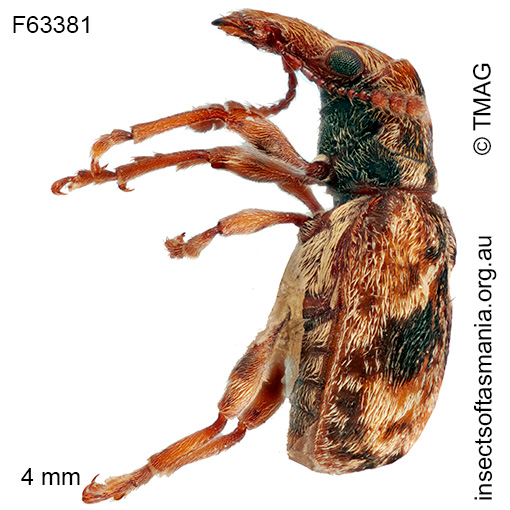
Eupanteos cf montanus (Oke, 1934) (a species of fungus-weevil)
Basis for Tasmanian occurrence
Classification
Suborder: Polyphaga
Superfamily: Curculionoidea
Family: Anthribidae
Subfamily: Anthribinae
Morphology
Flightedness: winged and assumed capable of flight
Morphology (characterised by L. Forster): — Eyes entire — Pronotum with a transverse antebasal carina some distance cephalad from base.
Ecology
Association with dead wood or old trees: obligately saproxylic
Ecological attributes: — May occupy logs or trunks of Eucalyptus obliqua, at least temporarily, since found having emerged within six years of felling (Grove et al., 2009).
Collection method(s) for TFIC material: — Baited trapping (funnel trap) — Emergence trapping from log of Eucalyptus obliqua — Flight intercept trapping (trough below Malaise trap) — Hand collection (substrate not specified) — Malaise trapping — Pitfall trapping — Sticky trapping on Eucalyptus obliqua — Vane trapping.
Source ecological literature:
Grove, S.J. (2009b). Beetles and fuelwood harvesting: a retrospective study from Tasmania’s southern forests. Tasforests 18: 77-99.
Grove, S. et al. (2009). A long-term experimental study of saproxylic beetle … succession in Tasmanian Eucalyptus … logs… In: Fattorini, S. (Ed.), Insect Ecology and Conservation. Research Signpost, pp. 71-114.
Harrison, K.S. (2007). Saproxylic beetles associated with habitat features in Eucalyptus obliqua trees in the southern forests of Tasmania. PhD thesis, Dept. of Zoology, Univ. of Tasmania, Hobart.



